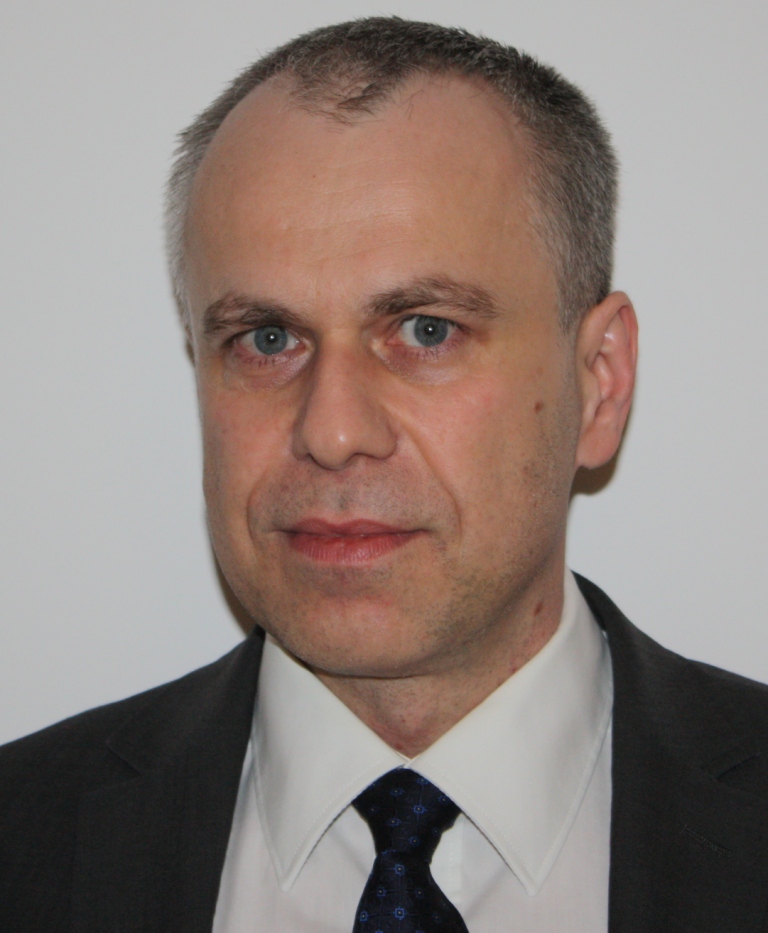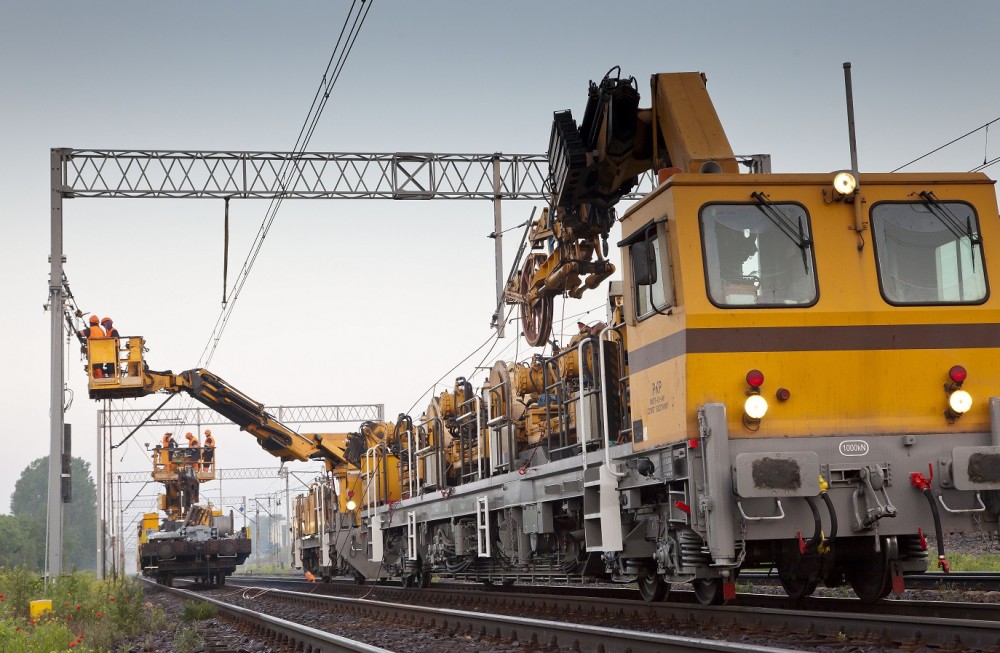Mariusz Bryke, Managing Director of Kaizen Institute Poland, interviews Wojciech Smardz, Head of the Process Improvement Office and Manager of the Step-by-Step Program in the PKP Energetyka capital Group, about KAIZEN™-based activities, the culture of Continuous Improvement and the Step-by-Step Program.

Mariusz Bryke

Wojciech Smardz
Mariusz Bryke: Why did you decide to implement the KAIZEN™ methodology in your organization?
Wojciech Smardz: We did it for several reasons. Each organization needs systems to improve permanently, to explore new ways and work standards, to involve staff and increase effectiveness. The new owner with global experience also inspired us to follow this direction. Open attitude and continued support from the Management Board cannot be overestimated either.
Thus, we came up with the idea of developing a systematic approach to the issue with the support of professional expertise. It led us to the launching of the Step-by-Step Program.
What are your objectives under the Program?
The objectives are in line with the values of the organization, that is Quality, Safety, Involvement and Effectiveness.
Our intermediate working goals are: Creating conditions to facilitate Listening to our Staff – taking advantage of their unrivalled experience; engaging Employees; developing Safe work conditions; strengthening mechanisms that support a learning Organization – building competences; subsequent increase in Effectiveness. Objectives have been laid out in the form of specific indicators and value goals.
How have you designed the Program roadmap?
As a large organization with more than five thousand employees, we operate in numerous sectors, such as railway, electrical power engineering, fuels, energy sales. We also manage our power infrastructure property. Our operations focus mainly on the Polish market, but we take first steps to enter foreign markets, as well. We run business activities in several dozen locations throughout Poland.
Naturally, we figured out that it was necessary to select our primary interest areas and then to prepare relevant Diagnosis. Firstly, 11 pilot locations were involved. Afterwards we launched the Extension phase, that is the implementation of solutions worked out in pilot locations, in the remaining selected areas.
The project timeline was as follows:
February 2017 – launch of the Step-by-Step Program, April 2017 – entering the Diagnosis phase that was finally closed in June. From September 2017 to February 2018 we implemented proposed solutions in pilot locations. In May 2018 we entered the Extension phase which is intended to be finished in November 2019. Each phase ends with result review and their analysis against established objectives.
What is the main focus of the project?
Pilot activities let us select specific practices and tools to be used across the organization.
Daily KAIZEN™ 1 (DK1) – Team Organization including Daily Operational Meetings at KAIZEN™ Boards which provide the visualization of the Work Plan, KPI and PDCA. In total about 100 locations across Poland.
Daily KAIZEN™ 2 (DK2) – Workplace Organization based on the 5S tool. 5 different types of workplaces are involved: maintenance trains, maintenance train halls, train repair shops, tool bags and emergency vehicles. In total about 200 locations and 3.5 thousand tool bags.
Suggestion System including structural problem-solving tools as well as work standardization methodologies and the TWI method.
Last Planner – a Lean management system to manage construction projects.
How did you prepare for the Program?
I see two key priorities:
• first, effective communication of the Program within the organization with major focus put on explaining benefits for Clients, Employees and for the Organization itself. We based our communication efforts on the internal media and on numerous reference visits and site meetings.
• secondly, which seems quite essential, the clear concept of a Team involved in the Program. The Program is almost 100% based on our Staff with only two employees full-time dedicated to the project. The rest are 80 employees responsible for particular tasks under the Program. They have been invited to take the following roles: Support Leaders responsible for DK1 and DK2 implementation, Standardization Teams preparing Work Standards, Internal TWI Trainers, Internal Last Planner System Trainers, Team of Ambassadors responsible for maintaining implemented solutions in all the locations by means of so-called Support Visits.
What did you do to prepare the Team?
We had a clear consistent plan based on several activities. Our staff participated in KAIZEN™ College sessions. 50 Support Leaders and Ambassadors were trained on the KAIZEN™ Practice level and 14 employees on the KAIZEN™ Trainer level. What we appreciated most were the Gemba Benchmarktour visits where all the training and workshop activities took place. Those were the key activities in terms of benefits – we observed our employees getting more and more convinced that it “can be done”, which seemed not that obvious at the beginning.
We developed extra competence at additional workshops dedicated to particular issues. We always had a well-prepared Manual at hand. Its content and included audit questions allowed us to verify the delivery of a particular solution and to identify areas where additional support is necessary.
How did you face the challenge as a geographically dispersed organization?
Here the Standards, identical for all the locations, should be treated as an absolute priority.
We keep all our perfectly prepared Manuals updated to make them a good source of reference for the employees. We also make sure to provide the Teams of sufficient numbers for particular practices.
We received a great deal of support from Kaizen Institute Consultants who always did their best to ensure that all the locations implement the same standards.
How do you intend to maintain and develop the practices?
It is the responsibility of our Team of Ambassadors who are well prepared to for their job – they participate in KAIZEN™ College trainings, follow the path of building relevant competences, take part in Audits carried out by Kaizen Institute Consultants and finally perform the Audits on their own. We treat the Audits as support visits which every time are followed by developing the action plan to identify necessary support needed for a particular entity.
Have you faced any difficulties on your way to success?
It seems natural in every organization in the process of Change. Take into consideration that our organization has a long history and specific corporate culture coming from a big PKP group – a state-run enterprise.
We take advantage of wide invaluable experience of our employees, yet, at the same time teaching them new work methods and showing them good industry practices. We emphasise the benefits that come along with the change.
However, we are aware that it is the process that needs time.
What are your key benefits and results of the Program?
The benefits are real – we run our activities on the operational level. DK1 and DK2 let us change some aspects of work practices and workplaces to make them safer and more attractive.
We engage our employees in, for example, 5S activities, we observe them being more and more involved, we can see increasing satisfaction which makes us really proud.
By learning all the above-mentioned new practices, we have been developing competences for our organization.
We measure and observe improving work efficiency.
Can you give any hints for all the organizations which are about to enter their way of implementing KAIZEN™ culture?
It is absolutely essential to have the management support. You have to establish clear goals and start from pilot programs to verify initial plans.
You should know how to involve employees, how to organize them and how to transfer knowledge to the organization. It is important to select useful practices and make sure they make a consistent system.
Employees should be aware of benefits so good communication cannot be overestimated. And, of course, the best professional consultants are, by all means, the key to success.












